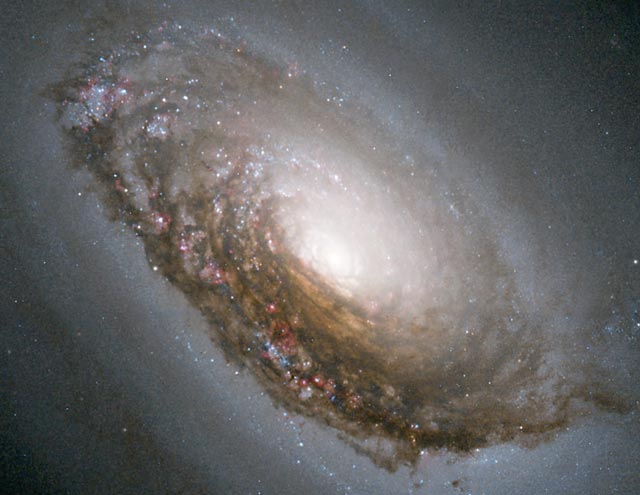
|
Credit & Copyright: NASA and the
Hubble Heritage Team
(AURA/STScI),
S. Smartt
(IoA) &
D. Richstone
(U. Michigan)
et al.
Explanation:
The Sleeping Beauty galaxy may
appear peaceful at first sight but it is actually
tossing and turning.
In an unexpected twist,
recent observations have shown that the gas in the
outer regions of this photogenic
spiral
is rotating in the opposite direction from all of the stars!
Collisions between gas in the inner and outer
regions are creating many
hot blue stars and pink
emission nebula.
The above image was taken by the
Hubble Space Telescope
in 2001 and released last week.
The fascinating internal motions of
M64,
also cataloged as
NGC 4826, are thought to be the result of a
collision between a
small galaxy and a large galaxy where the resultant
mix has not yet settled down.
|
January February March April May June July August September October November December |
| ||||||||||||||||||||||||||||||||||||||||||||||||
NASA Web Site Statements, Warnings, and Disclaimers
NASA Official: Jay Norris. Specific rights apply.
A service of: LHEA at NASA / GSFC
& Michigan Tech. U.
Based on Astronomy Picture
Of the Day
Publications with keywords: M 64
Publications with words: M 64
See also:
